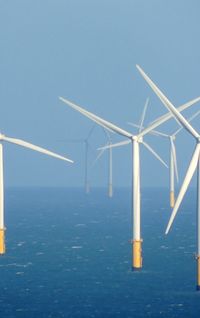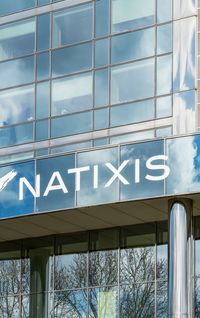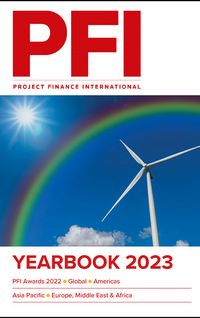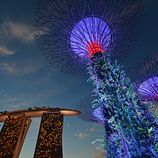Developing innovative financing structures to mobilise liquidity towards the solar PV sector across the Taiwanese market is a significant step in the maturity of its renewable energy sector. Linklaters’ partner Ying Fu, Clifford Chance partners Nadia Kalic and Chad Bochan, as well as Standard Chartered’s Steve Mercieca, Anqi Gong and Benjamin Tan provide further insight on such innovative financing structures adopted for the 186MW and 82MW refinancings of solar PV assets across the Taiwan market for New Green Power and BlackRock Alternatives’ Climate Infrastructure business.
The Taiwan market power sector has been undergoing significant transformation as it seeks to diversify the energy mix from thermal capacity towards renewable energy. As of end 20211, installed power generating capacity is approximately 59GW, with ~71% coming from thermal capacity – coal, gas, and oil. Electricity consumption rose by 4.5% in 2021, driven primarily by expanding production across the manufacturing sector.
The diversification towards clean energy has been primarily focused across solar photovoltaic, onshore and offshore wind, with significant capital investments coming from local and international investors. Generation levels from renewable energy stood at 6% as of year-end 2021, of which ~45.7% was from solar photovoltaic energy. The expectation is that renewable energy will increase its share of electricity capacity to ~15% by 2025.
Over the last 15 years, regulations have supported the promotion of renewable energy through the Renewable Energy Development Act and associated regulations. Solar PV has been a significant contributor to the overall increase in generation from renewable energy, particularly given the different applications across ground-mounted, floating, and rooftop solar PV installations.
Thunderball 1.0
Having made a number of major investments in the Taiwan market’s renewable space in recent years, BlackRock Alternatives’ Climate Infrastructure business undertook a landmark solar PV portfolio refinancing in April 2022 to further support its growth strategy, and successfully secured refinancing of NT$9.4bn, approximately US$328m, for a 186MW portfolio of solar assets in the Taiwan market, the TB1 Portfolio.
The TB1 Portfolio is ultimately owned by a fund managed by BlackRock Alternatives’ Climate Infrastructure business and represents 42 projects spanning ground-mounted, floating and rooftop solar assets across the Taiwan market, which BlackRock Alternative’s Climate Infrastructure and New Green Power have taken through from construction to operations.
* BlackRock Alternatives’ Climate Infrastructure focused on real assets within the renewable power sector and has investments in both greenfield and brownfield projects.
* New Green Power is wholly owned by a fund managed by BlackRock Alternatives’ Climate Infrastructure business, and is headquartered in Taipei. It has been a key player in the local renewable energy market, leading the construction, development and operations of solar PV assets. New Green Power provides operations and maintenance to all 42 assets within the TB1 Portfolio.
BlackRock Alternatives’ Climate Infrastructure business was advised by Clifford Chance. The banks were advised by Linklaters, with due diligence support provided by KPMG, Marsh and Mott MacDonald.
* TB1 portfolio projects – The TB1 Portfolio comprises 31 ground-mounted, 115.8MW, three floating solar, 45.6MW and eight rooftop solar, 26.3MW, projects. All assets within the TB1 Portfolio are fully operational, having achieved commercial operation between 2016 and 2021.
The assets are held by Zhao Young Co Ltd, a wholly owned subsidiary of a fund managed by BlackRock Alternatives’ Climate Infrastructure business, and its direct subsidiaries. Zhao Young acted as the single Borrower entity under the Thunderball 1.0 financing.
Each project is fully contracted via a 20-year feed-in tariff with the Taiwan Power Company (Taipower) as an offtaker. Taipower, rated AA– stable by S&P, is the state-owned electricity transmission and distribution company.
* Debt structure and lenders – The debt facility of NT$9.4bn was sized in line with financing covenants common across the solar industry, reflecting a P90 energy production base case with DSCR levels representative of the Taiwan market’s solar PV transactions. The debt facility was specifically split across a term facility that was used to refinance outstanding debt facilities at the borrower and subsidiary level, and facilitate recapitalisation; and a debt service reserve facility (DSRF) that provides debt service reserving capabilities to the borrower in lieu of a cash reserve.
The term facility is structured as a maximum 18-year amortising green loan facility with a mini-perm feature featuring extension mechanics at 6 and 12 years.
The debt is supported by incumbent lenders to the portfolio Bank Sinopac and E.Sun Commercial Bank, together with new lenders Australian and New Zealand Banking Group Ltd, BNP Paribas, Standard Chartered Bank (Standard Chartered), Sumitomo Banking Corporation (SMBC) and Hongkong and Shanghai Banking Corporation. HSBC acted as documentation coordinator, Standard Chartered as green loan coordinator, and SMBC as hedging coordinator.
Innovative features
The final structure included a number of Taiwan market leading features such as the use of a DSRF and the first non-recourse holding company portfolio financing for renewables:
* The use of a DSRF has not been a typical feature in North Asia asset level financings and represents a market first for the Taiwan market.
* The holding company financing structure allowed financing to be streamlined through a single borrower, while minimising the need for reorganisation of project ownership.
* With all assets having operational track records and performing satisfactorily, the lenders focused on a representative sample set of metrics to evaluate operational performance during the diligence phase. Given the significant number of assets in the portfolio, such sampling was necessary to ensure an efficient and timely diligence process, while providing sufficient comfort to lenders that base case metrics would be met, particularly given the long tenor amortisation features of the transaction.
* The portfolio approach also flowed through into the covenant and security package, which balances lender protections and operational requirements, in the context of the pooling of risk across the portfolio assets.
Green loan framework – The Green Loan Framework, which is in line with the Green Loan Principles (2021), was adopted for the financing, with DNV GL acting as a consultant for second-party opinion. This transaction represented the first green loan arranged by BlackRock Alternatives’ Climate Infrastructure business across Asia-Pacific and hence was a landmark event for BlackRock Alternatives’ climate infrastructure investment activities in the region. Standard Chartered acted as Green Loan Coordinator, facilitating the process for the borrower and lenders. The TB1 Portfolio is expected to generate a total of 270m kWh of clean electricity annually and will provide power to 80,000 Taiwan market households for more than 20 years.
Project Thunderball 2.0
Following the Thunderball 1.0 landmark refinancing, in November 2022 BlackRock Alternatives’ Climate Infrastructure business successfully closed a follow-on financing in the Taiwan market for NT$3.913bn, approximately US$125m, in relation to a separate 82MW solar portfolio, the TB2 Portfolio, with the capacity to be upsized to NT$10bn, approximately US$320m.
The TB2 Portfolio is ultimately owned by a fund managed by BlackRock Alternatives’ Climate Infrastructure business and aggregates more than 100 projects and sub-projects spanning ground-mounted, floating and rooftop technologies.
Thunderball 2.0 represents a further landmark transaction for BlackRock Alternatives’ Climate Infrastructure business and New Green Power. It builds on the structure developed for Thunderball 1.0 and adds further innovative first-in-market features as highlighted below.
This transaction represents BlackRock Alternatives’ active approach to capital markets management, which seeks to maximise returns through implementation of optimal financing structures and taking advantage of strong liquidity in markets.
As was the case on Thunderball 1.0, BlackRock Alternatives’ Climate Infrastructure business was advised by Clifford Chance, and the banks were advised by Linklaters with due diligence support provided by KPMG, Marsh and Mott MacDonald.
* TB2 Portfolio projects – The TB2 Portfolio comprises an aggregate 55.2MW of operational capacity, and 26.6MW of capacity under construction. Compared with the TB1 Portfolio, the projects are individually smaller. Of the entire TB2 Portfolio, only six assets have individual capacities of more than 5MW. Lenders’ diligence was similarly focused on a sampling mechanism incorporating the larger capacity projects.
As was the case on Thunderball 1.0, the assets are held by a single borrower entity, Yong Shang Co Ltd, and its direct subsidiaries. Yong Shang is wholly owned by New Green Power, which itself is wholly owned by a fund managed by BlackRock Alternatives’ Climate Infrastructure business. The operational assets are all fully contracted with Taipower on the basis of the feed-in tariff, while the construction assets either have already or are expected to enter into PPAs with Taipower, in line with local law requirements.
* New features in Thunderball 2.0 – In addition to a term facility and a DSRF, the Thunderball 2.0 financing featured an open platform portfolio structure, under which new projects can be included in the portfolio financing upon satisfaction of conditions set out in the documentation, enabling the sponsor to introduce its development pipeline of projects into the portfolio over time; a construction facility, which was used to refinance outstanding debt facilities, with the remaining commitments available to fund capex on the construction assets; and an accordion feature that can be used to add further facilities to fund acquisition and construction of new assets.
Existing portfolio lenders Bank Sinopac and E.Sun Commercial Bank provided the debt, together with BNP Paribas, Credit Agricole CIB, and Standard Chartered. Credit Agricole CIB acted as green loan coordinator, and BNP Paribas as hedging coordinator.
Similar to Thunderball 1.0, the term facility and construction facility were structured in line with the Green Loan Principles (2021), with DNV GL acting as a consultant for second-party opinion.
Footnote
1 – Taiwan market Energy Statistics Yearbook, published by the Ministry of Energy Administration Bureau
To see the digital version of this report, please click here
To purchase printed copies or a PDF of this report, please email leonie.welss@lseg.com

















